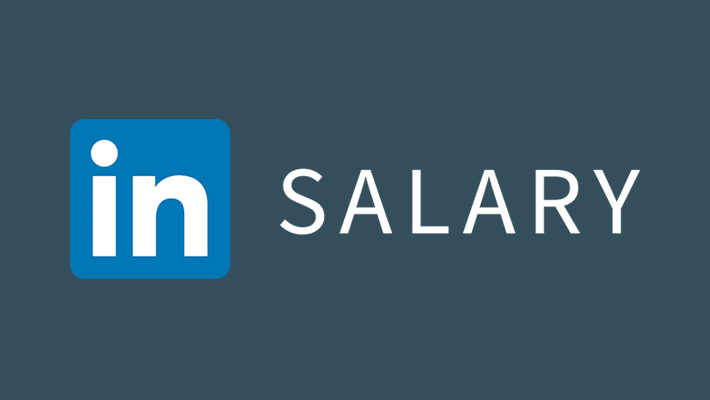
In today’s competitive job market, it’s crucial to have a clear understanding of your desired salary range. This is where LinkedIn comes in handy. LinkedIn, the world’s largest professional network, provides valuable insights into the salary ranges offered in various industries and job roles. In this blog post, we will explore the factors that influence the salary range on LinkedIn and how you can determine your own worth. We will also delve into leveraging LinkedIn for salary negotiations, comparing salaries for different job roles, and analyzing the impact of experience, education, and geographic location on your salary range. Additionally, we will discuss the top industries with higher LinkedIn salary ranges and provide strategies to boost your earning potential on this platform. Stay tuned for all the valuable insights and trends you need to know to excel in your career.
Contents
- 1 Understanding Linkedin Salary Range
- 2 Factors Influencing Linkedin Salary Range
- 3 How To Determine Your Linkedin Salary Range
- 4 Exploring The Job Market On Linkedin
- 5 Leveraging Linkedin For Salary Negotiation
- 6 Comparing Salaries For Different Job Roles On Linkedin
- 7 Impacts Of Experience On Linkedin Salary Range
- 8 The Role Of Education In Linkedin Salary Range
- 9 Analyzing Geographic Location And Linkedin Salary Range
- 10 Top Industries With Higher Linkedin Salary Range
- 11 Discovering Linkedin Salary Insights And Trends
- 12 Strategies To Boost Your Linkedin Salary Range
- 13 Frequently Asked Questions
Understanding Linkedin Salary Range
LinkedIn is a powerful platform that connects professionals from various industries and helps them explore job opportunities, network with others, and gain insights into their respective fields. One of the crucial aspects professionals often seek on LinkedIn is salary information. Understanding the LinkedIn salary range can provide valuable insights into compensation trends, industry standards, and potential earnings.
LinkedIn Salary is a feature on the platform that allows users to explore salary insights and trends based on their specific job title, industry, experience level, and location. It provides a range of salaries, including the median, low, and high values, giving professionals a comprehensive understanding of their earning potential. By leveraging LinkedIn Salary, individuals can make more informed decisions regarding their career path and negotiate better salaries.
Factors such as industry, job role, experience level, and education greatly influence the LinkedIn salary range. For instance, technology-related roles often offer higher salaries than creative or administrative positions. Furthermore, individuals with extensive experience or advanced degrees tend to have a wider salary range compared to entry-level professionals. Understanding these factors can help individuals assess their market value and negotiate their salaries effectively.
| Job Roles | Median Salary Range |
|---|---|
| Data Scientist | $90,000 – $150,000 |
| Marketing Manager | $60,000 – $100,000 |
| Software Engineer | $70,000 – $120,000 |
By comparing salaries for different job roles on LinkedIn, professionals can gain insights into the earning potentials of various positions. This knowledge can aid professionals in making informed career decisions, identifying lucrative job opportunities, and understanding the salary expectations within their industry.
Experience plays a significant role in determining the LinkedIn salary range. Professionals with years of experience in their field often receive higher salaries compared to those in entry-level positions. Employers value the expertise and industry knowledge gained through years of practice, which contributes to a wider salary range. By leveraging their experience and showcasing their accomplishments, professionals can increase their earning potential.
Another crucial aspect that shapes the LinkedIn salary range is education. Advanced degrees and specialized certifications can often translate into higher salaries for professionals. LinkedIn Salary provides insights into the impact of education on potential earnings, allowing individuals to assess the relevance of additional education in shaping their career trajectory and increasing their salary range.
Analyzing the geographic location in relation to the LinkedIn salary range is important as well. Salaries can significantly vary based on the cost of living and demand for specific skills in different regions. For instance, professionals working in major cities or technology hubs often command higher salaries than those in smaller towns or remote locations. By understanding the salary trends specific to their desired location, individuals can make informed decisions about relocation or negotiate appropriate compensation.
Several industries offer higher LinkedIn salary ranges due to various reasons such as demand, skill scarcity, or economic factors. By identifying industries with higher earning potentials, professionals can align their career goals and aspirations accordingly. For instance, technology, finance, and healthcare are known to offer competitive salaries, while creative fields may have more variability. Understanding these industry-specific salary ranges can help professionals strategize their career paths and make informed decisions.
Discovering LinkedIn salary insights and trends can be highly beneficial when planning one’s professional journey. By regularly monitoring changes in the salary landscape, professionals can identify emerging trends, assess industry demands, and make informed decisions about career progression. Being aware of salary insights can aid in negotiating better compensation packages, setting realistic expectations, and ensuring they are valued for their skills and expertise.
In conclusion, understanding the LinkedIn salary range is essential for professionals who want to make informed career decisions, negotiate better salaries, and stay updated with industry trends. By utilizing the LinkedIn Salary feature, comparing salaries for different job roles, analyzing the impact of experience and education, and considering geographic location and industry trends, professionals can gain valuable insights into their earning potential and shape their career paths accordingly. LinkedIn Salary serves as a valuable tool for professionals seeking to maximize their potential in the ever-evolving job market.
Factors Influencing Linkedin Salary Range
Factors Influencing LinkedIn Salary Range
When it comes to determining your salary on LinkedIn, there are several factors that come into play. Your LinkedIn salary range is not solely based on your job title or industry. There are various aspects that employers consider when determining the compensation package for a position. In this blog post, we will explore the factors that influence the LinkedIn salary range and provide some insights on how you can increase your earning potential.
Experience:
One of the key factors that affect your LinkedIn salary range is your level of experience. Employers value candidates who have a proven track record and relevant experience in a particular field. The more experience you have, the higher your chances of commanding a higher salary. Your LinkedIn profile should highlight your accomplishments, projects, and any relevant certifications or training you have completed.
Education:
While experience plays a crucial role in determining your LinkedIn salary range, education is also an important factor for employers. Higher levels of education, such as a master’s degree or Ph.D., can often lead to higher-paying positions. Additionally, specialized certifications or professional development courses can demonstrate your commitment to continuous learning and enhance your marketability.
Geographic Location:
The location where you are seeking employment can significantly impact the LinkedIn salary range. Salaries can vary greatly depending on the cost of living and demand for certain skills in a particular area. For example, job opportunities in metropolitan areas or technology hubs tend to offer higher salaries compared to rural or less competitive regions. When exploring job opportunities on LinkedIn, consider the geographic location and its potential impact on your salary expectations.
Industry and Job Demand:
The type of industry you work in and the demand for specific job roles can greatly influence your LinkedIn salary range. Certain industries, such as technology or finance, often offer higher salaries due to the demand for specialized skills. It is important to research and understand the market trends and demand for your desired job role within your chosen industry. This will help you gain insights into the salary expectations and adjust your LinkedIn profile accordingly.
Conclusion:
While your job title and industry are important factors in determining your LinkedIn salary range, they are not the only ones to consider. Experience, education, geographic location, and job demand all play a significant role in shaping your earning potential on LinkedIn. By effectively showcasing your expertise, continuously investing in your education, and staying informed about industry trends, you can increase your chances of securing a higher salary range on LinkedIn. Keep these factors in mind as you navigate the job market on LinkedIn and make the most of the platform for your professional growth.
How To Determine Your Linkedin Salary Range
Do you ever wonder how much you should be earning based on your skills and experience? LinkedIn Salary can help you determine your worth in the job market. With this valuable tool, you can gain insights into the salary range for your specific role or industry. By understanding the factors that influence LinkedIn Salary, you can confidently negotiate for a fair compensation package. In this blog post, we will explore how to determine your LinkedIn salary range and leverage this knowledge to your advantage.
When it comes to determining your LinkedIn Salary, several factors come into play. The first important factor is your job title or role. Different roles have different salary ranges depending on the demand and supply in the job market. LinkedIn Salary allows you to compare salaries for various job roles, helping you gain a better understanding of the market rates for your position.
Another significant factor that influences your LinkedIn Salary range is your level of experience. As you gain more experience in your field, your value and expertise increase, which can lead to higher salary expectations. LinkedIn Salary provides insights into how experience impacts salary ranges, allowing you to set realistic expectations based on your years of employment.
| Factors Influencing LinkedIn Salary Range: |
|---|
|
|
|
|
Exploring The Job Market On Linkedin
In today’s competitive job market, it is crucial for professionals to leverage every available resource to stay ahead. One such valuable resource is LinkedIn, the world’s largest professional networking platform. LinkedIn not only allows users to connect with colleagues and showcase their skills and experience, but it also provides a unique opportunity to explore the job market. By utilizing the powerful features on LinkedIn, professionals can gain valuable insights into job trends, industry demands, and potential salary ranges.
LinkedIn Salary, a feature introduced by LinkedIn, offers users a comprehensive platform to research and explore salary information. With more than 690 million professionals registered on LinkedIn, the platform has access to vast amounts of salary data across various industries, job titles, and geographic locations. Users can access this data by searching for specific job roles or industries and analyzing the salary ranges.
One of the primary benefits of exploring the job market on LinkedIn is the ability to understand the LinkedIn salary range for different positions. By analyzing the salary information provided by LinkedIn Salary, professionals can determine the average salary for a particular job title or industry. This information can be invaluable when negotiating salaries or considering a career change. The LinkedIn salary range can serve as a benchmark to compare with one’s current salary, helping professionals make informed decisions about their career progression.
| Job Title | Industry | Salary Range (USD) |
|---|---|---|
| Software Engineer | Technology | $80,000 – $120,000 |
| Marketing Manager | Marketing | $60,000 – $90,000 |
| Financial Analyst | Finance | $50,000 – $80,000 |
In addition to experience, education also plays a significant role in determining the LinkedIn salary range. Higher levels of education, such as master’s degrees or professional certifications, can often result in higher earning potential. LinkedIn allows users to filter salary data based on educational qualifications, giving professionals valuable insights into how education can impact their salary ranges in different industries and job roles.
Geographic location is another crucial factor in determining the LinkedIn salary range. Salaries can vary significantly based on the cost of living and demand for specific skills in different regions. LinkedIn provides users with the ability to analyze salary data specific to different geographic locations, helping professionals understand how their location may influence their earning potential. This information can be particularly useful for individuals considering relocation or exploring job opportunities in different cities or countries.
By exploring the job market on LinkedIn, professionals can gain valuable insights into salary trends and industry demands. Armed with this information, individuals can make informed decisions about their career paths, negotiate salaries more effectively, and stay competitive in the ever-changing job market. LinkedIn Salary, combined with the various filters and features provided by LinkedIn, offers professionals a powerful tool to explore the job market and boost their LinkedIn salary range.
Leveraging Linkedin For Salary Negotiation
The LinkedIn Salary feature provides valuable insights into the salary ranges for different job titles and industries. It is a powerful tool that professionals can leverage to negotiate their salaries effectively. By understanding the LinkedIn Salary range for their desired positions, individuals can make informed decisions and negotiate better compensation packages.
Factors influencing the LinkedIn Salary range
Determining your LinkedIn Salary range
Strategies for leveraging LinkedIn for salary negotiation
Comparing salaries for different job roles on LinkedIn
| Job Role | Salary Range |
|---|---|
| Software Designer | $80,000 – $120,000 |
| Marketing Manager | $70,000 – $100,000 |
| Financial Analyst | $60,000 – $90,000 |
| Project Manager | $90,000 – $130,000 |
Leveraging LinkedIn for salary negotiation is a proactive approach that can help professionals secure fair compensation packages. By utilizing the LinkedIn Salary feature, understanding the factors influencing salary ranges, and implementing effective negotiation strategies, individuals can optimize their earning potential in the job market.
Comparing Salaries For Different Job Roles On Linkedin
When it comes to job hunting on LinkedIn, one of the factors that people often consider is the salary range for different job roles. Knowing the average salary for a particular job can help you negotiate better or determine your worth in the job market. In this blog post, we will explore how you can compare salaries for different job roles on LinkedIn and use this information to your advantage.
LinkedIn provides a valuable resource called LinkedIn Salary, which allows users to access salary insights for various job roles. This feature collects salary data from millions of LinkedIn members, providing an accurate representation of the market. By using LinkedIn Salary, you can compare salaries for different job roles in your industry or specific location.
For example, let’s say you’re interested in a software engineering position in New York City. By using LinkedIn Salary, you can easily compare the salaries of software engineers in New York City with other locations or industries. This information can help you make informed decisions about your career path and potential salary expectations.
- Another advantage of using LinkedIn Salary is that it allows you to filter the data based on various factors such as experience level, education, and company size. This means you can compare salaries for different job roles based on these specific criteria, giving you a more accurate understanding of the market.
- Additionally, LinkedIn Salary provides insights into the compensation packages offered by companies. You can find information about bonuses, stock options, and other benefits, which can be crucial when comparing job offers.
- By leveraging the data available on LinkedIn Salary, you can gain a comprehensive view of the salary range for different job roles. This knowledge can empower you during salary negotiations or when determining your market value.
Furthermore, LinkedIn Salary also offers insights and trends related to salary data. This can be particularly valuable when you want to stay up to date with changes in the job market or identify emerging trends in your industry. By regularly checking LinkedIn Salary insights, you can gain a competitive edge and ensure that you are well-informed about the current salary landscape.
| Job Role | Location | Average Salary |
|---|---|---|
| Software Engineer | New York City | $120,000 |
| Marketing Manager | San Francisco | $130,000 |
| Financial Analyst | Chicago | $90,000 |
| Project Manager | London | $95,000 |
In conclusion, LinkedIn Salary is a valuable tool for comparing salaries for different job roles. By utilizing this feature, you can gain insights into the market, filter data based on specific criteria, and stay informed about salary trends. Whether you are job hunting, negotiating a salary, or simply exploring the job market, LinkedIn Salary can provide you with the information you need to make informed decisions.
Impacts Of Experience On Linkedin Salary Range
When it comes to determining your salary range on LinkedIn, experience plays a crucial role. Your professional experience, including the number of years you have worked in a specific industry or job role, has a direct impact on the salary you can expect. Employers and recruiters often consider the level of experience as a key factor in determining compensation packages.
Having extensive experience in a particular field signals to potential employers that you possess valuable skills, knowledge, and expertise. This can lead to higher compensation offers and better job opportunities. On the other hand, individuals with limited experience in a specific industry may be offered salaries on the lower end of the range. It is important to highlight your experience on your LinkedIn profile and showcase your accomplishments to attract potential employers and negotiate a competitive salary.
Furthermore, LinkedIn provides a platform for professionals to network, connect, and establish industry-wide relationships. By actively engaging with other professionals in your field, you can enhance your knowledge and gain valuable insights into industry trends, job requirements, and salary expectations. Networking with individuals who have similar levels of experience or who have successfully navigated their career paths can provide guidance on potential salary ranges to aim for and help you make informed decisions about your professional journey.
| Experience Level | Average Salary Range |
|---|---|
| Entry Level | $40,000 – $60,000 |
| Mid-Level | $60,000 – $80,000 |
| Senior Level | $80,000 – $120,000+ |
The Role Of Education In Linkedin Salary Range
Education plays a key role in determining the salary range on LinkedIn. In today’s competitive job market, employers value candidates with a strong educational background, as it demonstrates their knowledge, skills, and commitment to their field.
The level of education an individual has attained can significantly impact their earning potential. According to data from LinkedIn, salary ranges tend to increase as individuals achieve higher levels of education. For example, individuals with a bachelor’s degree may have a higher salary range compared to those with only a high school diploma or an associate degree.
Moreover, specialized education and certifications can also have a significant impact on a person’s salary range. LinkedIn offers various online courses and certifications that can enhance one’s skills and expertise in specific fields. These additional qualifications can be valuable assets and may enable individuals to negotiate for higher salaries or secure better job opportunities.
In conclusion, education has a vital role in determining the salary range on LinkedIn. Higher levels of education, specialized certifications, and continuous professional development can significantly impact an individual’s earning potential. By investing in education and staying updated with industry trends, professionals can expand their career opportunities and negotiate for higher salaries. Therefore, it is crucial to consider education as an essential aspect when determining and striving for a desirable salary range on LinkedIn.
| Pros of Education in Salary Range on LinkedIn | Cons of Education in Salary Range on LinkedIn |
|---|---|
| 1. Higher levels of education can lead to higher-paying positions. | 1. The cost of obtaining higher education can be financially burdensome. |
| 2. Specialized education and certifications can boost one’s expertise and attractiveness to potential employers. | 2. Some industries may prioritize experience over education. |
| 3. Continuously investing in education showcases commitment and dedication to professional growth. | 3. Job market competition may still exist, even with strong educational qualifications. |
Analyzing Geographic Location And Linkedin Salary Range
When considering job opportunities and potential salary ranges, one important factor to consider is the geographic location. The location of a job can have a significant impact on salary ranges, and understanding this link is crucial for job seekers and professionals on LinkedIn. In this blog post, we will explore the influence of geographic location on LinkedIn salary ranges and provide insights on how to analyze and make the most of this factor.
Geographic location plays a vital role in determining salary ranges on LinkedIn. Salaries can vary significantly from one city or region to another due to several factors such as the cost of living, demand for certain skills, and local market conditions. Professionals working in metropolitan areas or regions with a high cost of living may expect higher salary ranges to compensate for the higher expenses they may incur.
On the other hand, job opportunities in less populated or remote areas might offer lower salary ranges due to lower living costs and less competition. It’s important to note that salary ranges are not solely determined by the location, but rather a combination of factors including supply and demand, industry trends, and the specific organization or company hiring for the position.
| Factors Influencing LinkedIn Salary Range | How To Determine Your LinkedIn Salary Range |
|---|---|
|
|
LinkedIn Salary is a valuable tool that can assist professionals in analyzing geographic location’s impact on salary ranges. The platform provides insights into salary ranges for specific job titles in different locations, allowing users to make informed decisions when considering job opportunities. By utilizing LinkedIn Salary, professionals can gain a better understanding of the earning potential in various geographic areas and negotiate job offers more effectively.
Top Industries With Higher Linkedin Salary Range
When it comes to searching for a job and determining the salary range, LinkedIn has become an invaluable platform for professionals across various industries. Not only does it provide a platform to showcase your skills and accomplishments, but it also offers valuable insights into the salary ranges in different industries. Understanding the top industries with higher LinkedIn salary ranges can be beneficial for individuals looking to make informed career decisions and negotiate better compensation packages.
One of the industries that consistently offers a higher salary range on LinkedIn is the technology sector. With advancements in technology and the increasing demand for skilled professionals, tech companies are willing to pay top dollar for top talent. From software engineers to data scientists, professionals in the technology industry can expect competitive salaries that often surpass those in other sectors.
Another industry that boasts higher salary ranges on LinkedIn is the finance sector. With its focus on numbers, calculations, and high-stakes decision-making, finance professionals are well-compensated for their expertise. Whether it’s investment banking, hedge funds, or financial consulting, the finance industry offers attractive salary packages to attract and retain top talent.
| Industry | LinkedIn Salary Range |
|---|---|
| Technology | $70,000 – $150,000+ |
| Finance | $80,000 – $200,000+ |
| Healthcare | $60,000 – $150,000+ |
Healthcare is yet another industry that offers higher LinkedIn salary ranges. As the demand for quality healthcare services increases, medical professionals and healthcare administrators are often rewarded with competitive salaries. From doctors and nurses to healthcare executives, the healthcare industry provides attractive salary packages to acknowledge the significance of their roles.
While these industries may offer higher salary ranges on LinkedIn, it is important to note that various factors influence individual salary ranges within each industry. Factors such as experience, education, location, and job role can all impact the salary one can expect. So, it’s crucial to consider these factors and conduct thorough research to determine the salary range specific to your circumstances.
In conclusion, LinkedIn provides valuable insights into the salary ranges across different industries. The technology, finance, and healthcare sectors tend to offer higher salaries compared to other industries. However, it’s important to keep in mind that individual circumstances, such as experience, education, location, and job role, play a significant role in determining one’s salary range. Utilizing LinkedIn’s salary insights can empower professionals to make informed career decisions and negotiate better compensation packages.
Discovering Linkedin Salary Insights And Trends
LinkedIn Salary is a valuable tool for professionals looking to gain insights and trends in their respective industries. With the vast amount of data available on the platform, users can discover valuable information about salary ranges and compensation trends. By analyzing this data, professionals can make informed decisions about their career paths and negotiate salaries more effectively.
One of the key benefits of using LinkedIn Salary is the ability to gain insights into salary ranges specific to different industries and job roles. Whether you are a software engineer, marketing manager, or financial analyst, LinkedIn Salary provides valuable information on average salaries based on job titles and geographic locations. This allows professionals to benchmark their current salaries and identify opportunities for growth and advancement.
Moreover, LinkedIn Salary also allows professionals to gain insights into salary trends over time. By analyzing historical data, users can identify if salaries in their industry are on the rise or declining. This information can be crucial in making career decisions, such as whether to stay in a current job or explore new opportunities in industries with higher salary ranges.
LinkedIn Salary data can also help professionals understand the impact of experience and education on salary ranges. By comparing salaries at different levels of experience and education, individuals can gain a clearer understanding of how their qualifications align with industry standards. This information can be useful when negotiating for a raise or considering further education or certifications to boost their earning potential.
In conclusion, LinkedIn Salary is a valuable tool for professionals looking to discover salary insights and trends. By utilizing the platform, individuals can gain a better understanding of salary ranges specific to their industry, compare salaries based on job roles and experience levels, and make informed decisions about their careers. Whether it’s identifying opportunities for growth or negotiating salaries more effectively, LinkedIn Salary provides the information professionals need to succeed in today’s competitive job market.
| Key Takeaways: |
|---|
| – LinkedIn Salary provides valuable insights into salary ranges and compensation trends. |
| – Professionals can use LinkedIn Salary to benchmark their current salaries and identify opportunities for growth. |
| – Analyzing historical data on LinkedIn Salary allows users to identify salary trends over time. |
| – LinkedIn Salary helps professionals understand the impact of experience and education on salary ranges. |
| – By utilizing LinkedIn Salary, individuals can make informed decisions about their careers. |
Strategies To Boost Your Linkedin Salary Range
LinkedIn has become a powerful platform for professionals to connect, network, and find job opportunities. In addition to these benefits, LinkedIn also provides valuable information about salary ranges for various positions. Understanding the LinkedIn Salary Range is crucial for professionals who want to boost their earning potential and negotiate better job offers. In this blog post, we will explore strategies that can help you increase your LinkedIn Salary Range.
1. Optimize your LinkedIn profile: Your LinkedIn profile is your online resume and can greatly impact your salary range. Make sure your profile is complete, up-to-date, and includes relevant keywords. Highlight your key skills, accomplishments, and experiences. Additionally, ask for recommendations from colleagues and supervisors, as it adds credibility to your profile.
2. Expand your network: Building a strong professional network on LinkedIn can open doors to new opportunities and higher salaries. Connect with industry experts, thought leaders, and professionals in your field. Engage with their content, join relevant LinkedIn groups, and attend industry events. By expanding your network, you increase your chances of connecting with potential employers and influential individuals who can help boost your salary range.
3. Demonstrate your value: Employers are willing to pay higher salaries to professionals who can bring tangible value to their organizations. Make sure to showcase your achievements, quantifiable results, and the impact you have made in previous roles. Highlight any unique skills or certifications you possess that make you stand out from the competition. This will demonstrate to employers that you are worth investing in, leading to a higher salary range.
4. Continuous learning and development: In today’s dynamic job market, continuous learning and development are essential for professional growth. Stay updated with the latest industry trends, technologies, and best practices. LinkedIn Learning offers a wide range of courses and certifications that can enhance your skillset and improve your market value. By investing in your own development, you position yourself as a valuable asset to employers, which can result in a higher LinkedIn Salary Range.
5. Leverage your network for salary negotiation: When it comes to negotiating your salary, your network can provide valuable insights and support. Reach out to professionals in similar roles or industries to gather information about salary ranges and compensation packages. Use this knowledge to make informed negotiations with potential employers. Additionally, consider consulting with a career coach or mentor who can provide guidance and help you navigate the negotiation process effectively.
| Steps | Strategies |
|---|---|
| 1 | Optimize your LinkedIn profile |
| 2 | Expand your network |
| 3 | Demonstrate your value |
| 4 | Continuous learning and development |
| 5 | Leverage your network for salary negotiation |
Implementing these strategies can significantly boost your LinkedIn Salary Range. Remember to regularly update your profile, actively network, showcase your value, invest in learning, and utilize your connections for negotiation. By doing so, you will increase your chances of securing better job offers and enjoying a higher salary range in your professional journey.
Frequently Asked Questions
What is the purpose of understanding Linkedin salary range?
Understanding Linkedin salary range can help individuals gauge their market value and negotiate for better salaries.
What are some factors that influence Linkedin salary range?
Factors such as education, experience, job role, geographic location, and industry can influence Linkedin salary range.
How can individuals determine their Linkedin salary range?
Individuals can determine their Linkedin salary range by researching industry averages, analyzing their qualifications, and leveraging salary insights on Linkedin.
How can Linkedin be used to explore the job market?
Linkedin provides job listings, networking opportunities, and insights into specific industries, making it a valuable platform to explore the job market.
How can Linkedin be leveraged for salary negotiation?
By researching salary insights, networking with professionals in similar roles, and showcasing their skills and qualifications, individuals can leverage Linkedin for salary negotiation.
How can salaries for different job roles be compared on Linkedin?
Linkedin allows users to search for professionals in specific job roles, view their profiles, and gain insights into their salary ranges, facilitating salary comparisons.
How does experience impact Linkedin salary range?
Generally, individuals with more experience tend to have higher Linkedin salary ranges due to their accumulated skills, expertise, and industry knowledge.




